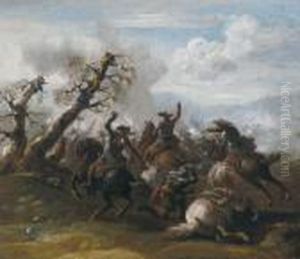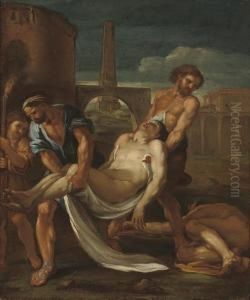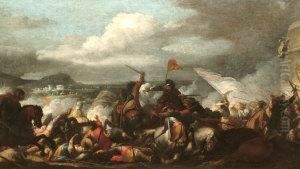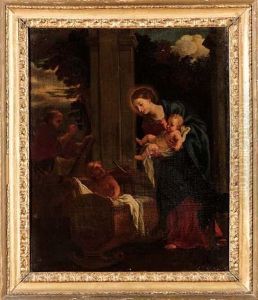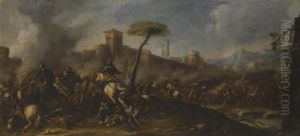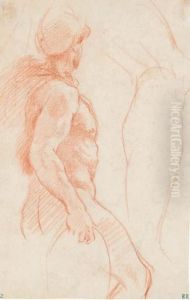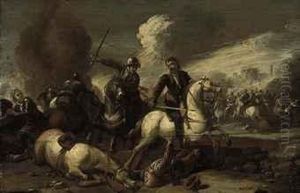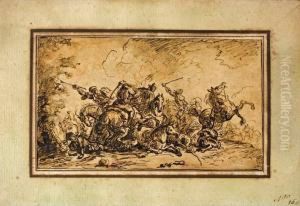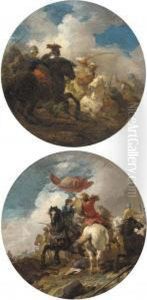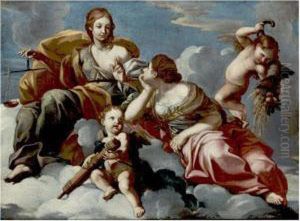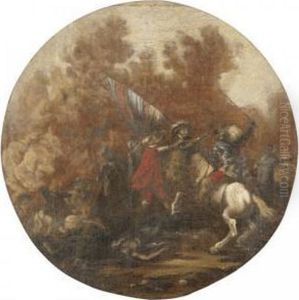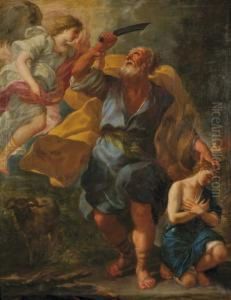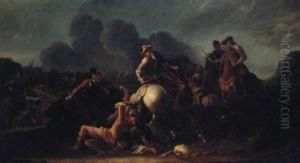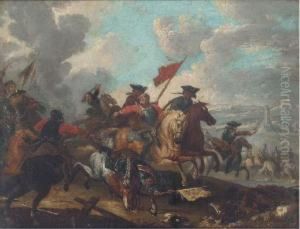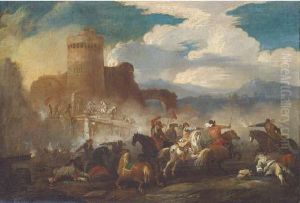Guglielmo Cortese Il Borgognone Paintings
Guglielmo Cortese, known as Il Borgognone (which translates to 'the Burgundian'), was an Italian painter and engraver active during the Baroque period. Born in Saint-Hippolyte, France, in 1610, he moved to Italy, where he would spend most of his life and where he gained his moniker due to his French origins.
Cortese is known for his dynamic battle scenes and animated landscapes, which exhibit a vivid sense of movement and a mastery in depicting the chaos of warfare. His artistic style was influenced by the works of the great Baroque painter, Pietro da Cortona, and by the dynamic compositions of the Northern Italian painters.
After settling in Rome, Il Borgognone became part of the circle of artists in the orbit of the Barberini family, who were significant patrons of the arts during that period. He worked on various commissions for the Barberini and other noble families, contributing to the grandeur of Baroque art in Roman churches and palaces.
Despite his success, Il Borgognone was known to lead a rather tumultuous personal life, often finding himself involved in quarrels and disputes. Nevertheless, his artistic legacy was significant, influencing later artists and contributing to the development of the Roman Baroque style.
Il Borgognone's works can be found in several prominent locations, including the Vatican, where his skill as a fresco painter can be appreciated. His engravings also gained notoriety for their detail and quality, spreading his fame beyond Italy.
He continued to work and influence the Italian art scene until his death in Rome in 1678. Through his dramatic renditions of battles and his ability to capture the essence of the Baroque spirit, Il Borgognone remains a noteworthy figure in the history of 17th century European art.








